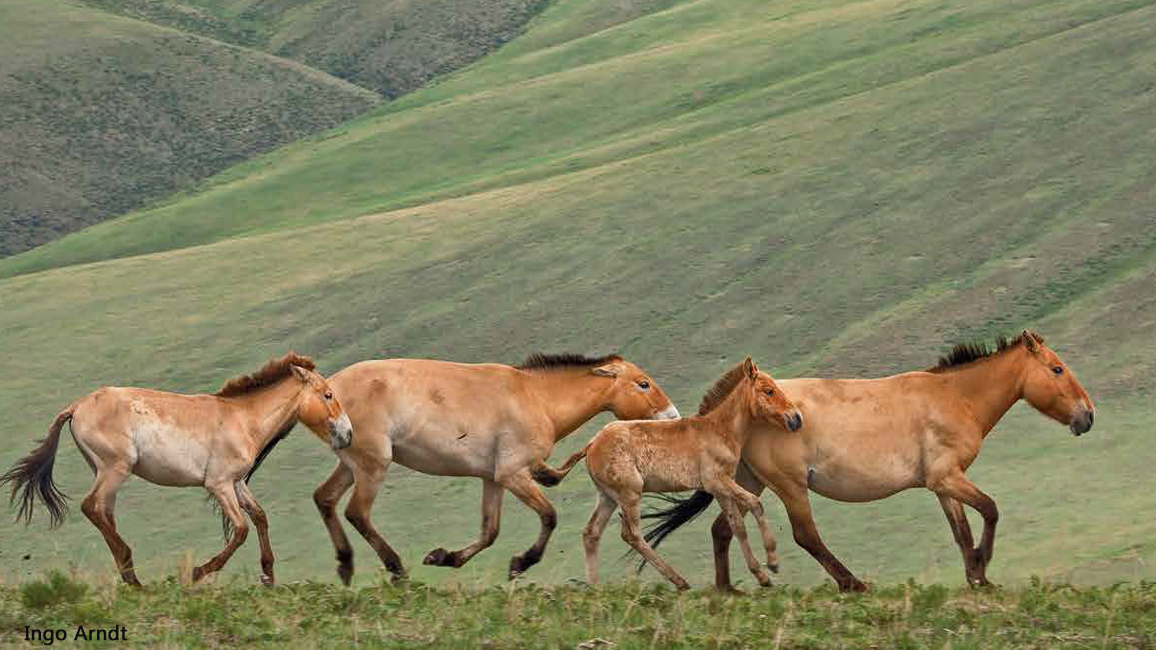
Seas of Grass
By Ellen Lambeth; Photos by Ingo ArndtWelcome to wide-open, windswept spaces covered mostly by grasses. Here, you can take an “armchair journey” to visit the world’s major kinds of grasslands.
PRAIRIE
Where do buffalo roam and deer and antelope play? On the range, of course—known here as the prairie. And why not? There’s plenty of grass to graze on.
Prairies dot the landscape throughout the middle of North America, stretching from Canada all the way down to Mexico. In different areas, you might find mostly short grasses, mostly tall grasses, or a mix of both.
There’s not nearly as much prairie as there once was. As early settlers spread westward across the country, they plowed up the land to grow crops. Over time, more and more towns and farms popped up—and took over more and more prairie. But people are working to save whatever prairie they can and to bring it back in places where it had disappeared.
BLACK-TAILED PRAIRIE DOG
Prairie dogs live in big colonies in shortgrass prairies, where they dine on the grasses and flowering plants. When they dig their burrows, they help keep the soil healthy and provide shelter for many other prairie animals.
PRAIRIE RATTLESNAKE
With this pose and a warning rattle, there’s no mistaking the message: “Stay back, or I’ll strike with my venomous bite!” An abandoned prairie dog burrow is a great place for the snake to escape the summer heat or for winter hibernation.
AMERICAN BISON
Buffalo, or bison, once roamed the prairie by the millions before being nearly wiped out by early settlers. But now, with help from many people, they are making a comeback in their wild prairie home.
PAMPAS
The pampas is mostly in the southern part of South America, between the Atlantic Coast and the Andes Mountains. When it’s summer up north on the prairie, it’s winter down here in the pampas.
Like the prairie, the pampas is at risk of disappearing because of farming and ranching. It can be hard to find the right balance between food for people and habitat for wildlife.
PUMA
Puma is just another name for mountain lion. And, like its North American kin, the cat is having trouble surviving in its shrinking habitat. But this one thrives in a protected park. It seems to be on the hunt, with its eye on some possible prey.
SOUTHERN CARACARA
This large, crested bird of prey is right at home, scanning the open land for food. It may look majestic like its falcon relatives. But, like vultures, it eats mostly already-dead stuff. Otherwise, small prey such as insects and reptiles will do.
GUANACO
The guanaco (gwuh-NAH-koh) is a llama cousin. Uh -oh, one may have spotted the approaching puma at left! Now it’s signaling a warning to its herd. With luck, the group will sprint away and find a safer space to graze in.
SAVANNA
Also called the veld or veldt, this tropical grassland stretches across the central and southern parts of Africa. There’s no better place for a wild safari, where you can watch for lions and rhinos or giraffes and zebras. Don’t be surprised by trees scattered here and there. Each one provides a bit of shade, a place to perch, or food.
The African savanna is dry for most of the year. But during the rainy season (summer), the landscape turns green and water holes fill up.
OSTRICH
One female ostrich chases another away from her piece of the savanna. Ostriches are the world’s biggest birds. They can’t fly, but they don’t need to. They can run—as fast as racehorses—to escape lions, hyenas, and other speedy predators.
TOPI
Many kinds of antelope roam the African savanna in herds, grazing on the grasses. Herd members take turns watching for predators such as lions and hyenas. This topi turns a termite mound into a good lookout post.
CHEETAH
Two males take turns spraying urine onto a lone tree. Their scent s turn the tree into a tall signpost that tells other cheetahs, “We were here.”
AFRICAN ELEPHANT
This big fellow rips up and munches a young acacia tree. That helps to keep the savanna open without too many tall trees. Elephants also eat the fruits, leaves, bark, and roots of trees and shrubs. During the rainy season, they graze on the grass.
STEPPE
The climate from the eastern edge of Europe across the center of Asia is usually harsh and dry. That’s where you’ll find a kind of grassland known as the steppe (STEP).
The plants and animals here can handle the extreme conditions, which range from hot summers to frigid winters. For example, wildflowers bloom among the steppe’s grasses for only a short time after the winter snows melt and the ground thaws. Now, which of these four grasslands would you most like to visit?
SIBERIAN MARMOT
Like a prairie dog, this big rodent lives in colonies on the grassland, where it digs burrows. This one is watching out for approaching danger, maybe from a hungry eagle or wolf. If it senses trouble, it will warn the colony with an alarm call that sends everyone into the safety of a nearby burrow.
SAWFLIES AND NIOBE FRITILLARIES
Here in the steppe—and wherever there are fields of grasses and other plants—there will be insects buzzing and flitting around. Wasp-like insects cluster on a grass flower head. Meanwhile, a pair of butterflies mate on another grass flower head. These insects feed on the bountiful plants and try to avoid other creatures that feed on them.
TAKHI
The takhi (TAH-kee) was long considered to be the world’s only truly wild horse. Takhi became extinct in the wild, but some lived in captivity. People bred these captive takhi until there were enough to return some to the wild. They brought these horses back to the steppe and released them into parks and other protected wild areas. Here, the takhi are making a successful comeback.




















